More trees, more shade, more savings
You can save energy in many ways, including what you do in the yard and garden. With spring just around the corner, you’re probably thinking about what to plant this year. Try trees for energy savings!
Our vegetation maintenance specialists recommend planting trees, as they can create shade to help you conserve electricity and pay less on your bill in the summertime. But knowing when, what, and where to plant is important.
First, it’s important to remember not to plant too close to power lines or pad-mounted transformers. To protect your plants and your power, never allow trees, bushes, or vegetation of any size to grow directly under electric lines. Before planting, consider the mature size of the species you’ve selected. Refer to our chart below.
As for pad-mounted transformers, our crews need ample space around those green or gray metal boxes to safely access them. Do not plant shrubs or other vegetation around pad-mounted transformers or block access to them.
And remember, always call 811 before you dig. It’s the law and could save your life.
Our suggested native tree options
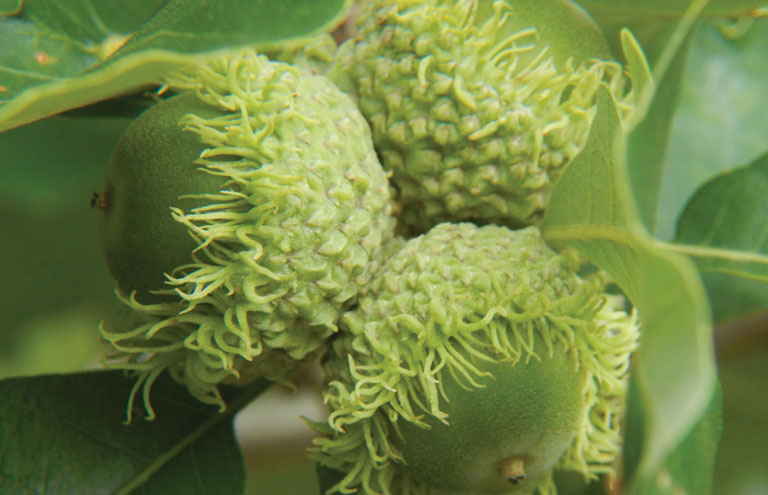
Burr oak (Quercus macrocarpa)
If you’re looking for a large tree with beautiful bark and distinctive acorns, this oak wilt-resistant specimen tree is a great option for increased shade on your home.
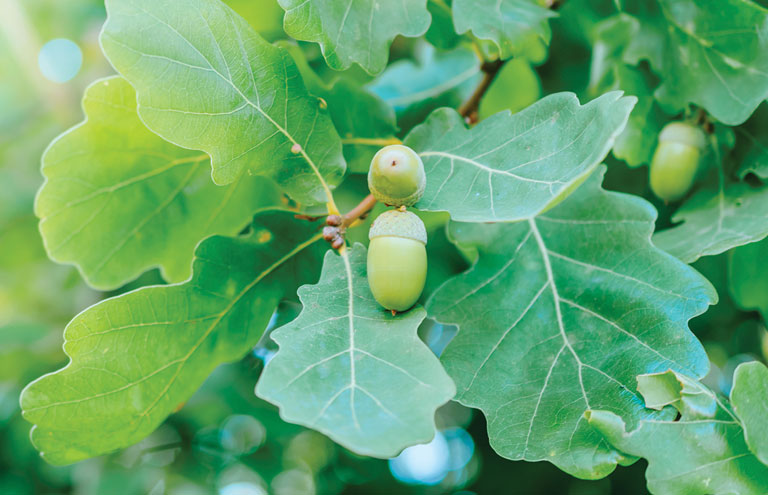
Lacey oak (Quercus laceyi)
For a smaller option, this landscape tree can provide optimal shade for south-facing windows with its low-spreading crown. This small to mid-size tree has a deep blue-green foliage and will grow slowly.
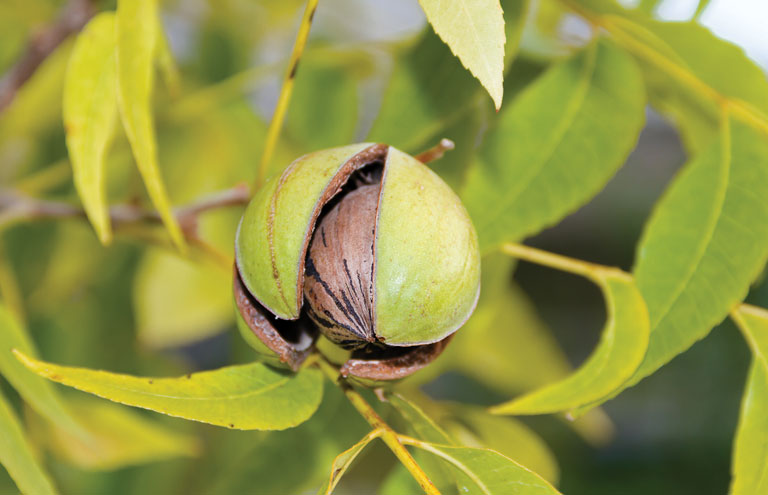
Pecan (Carya illinoinensis)
A common species in Texas, these hardy trees can weather heat well and actually grow best in full sunlight. They can grow up to 65 feet in height. We recommend planting it in an area where nuts will not disturb your walkways or gutters.
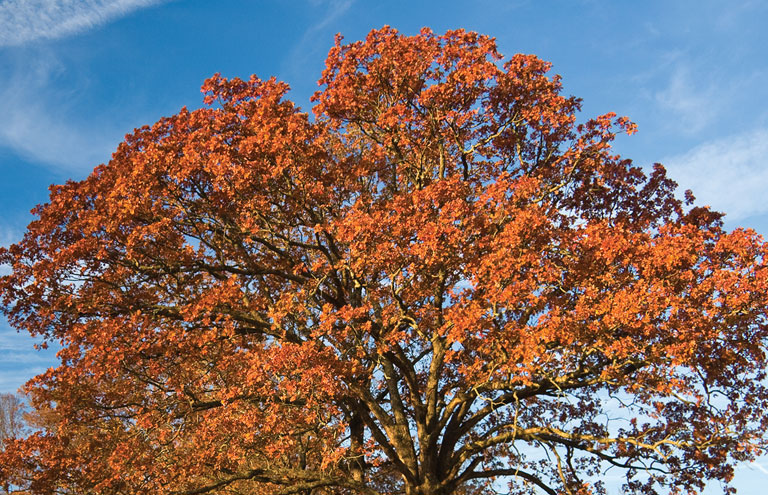
Post oak (Quercus stellata)
This oak wilt-resistant tree can grow even in rocky soil and provide great shade to your house. A beautiful tree for fall, this species can grow up to 50 feet tall.
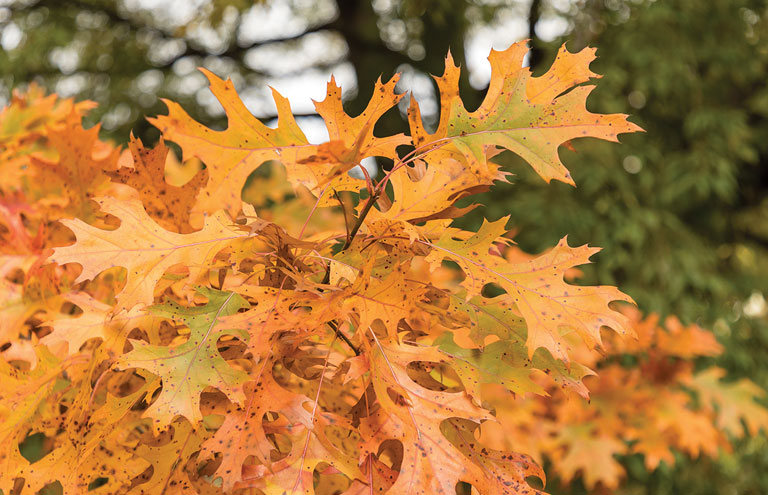
Shumard oak (Quercus shumardii)
If you’re in the market for a big tree, this is the largest species on the list. This fast-growing red oak can reduce up to 90% of the sunlight that hits your walls, windows, or roof in the summer.
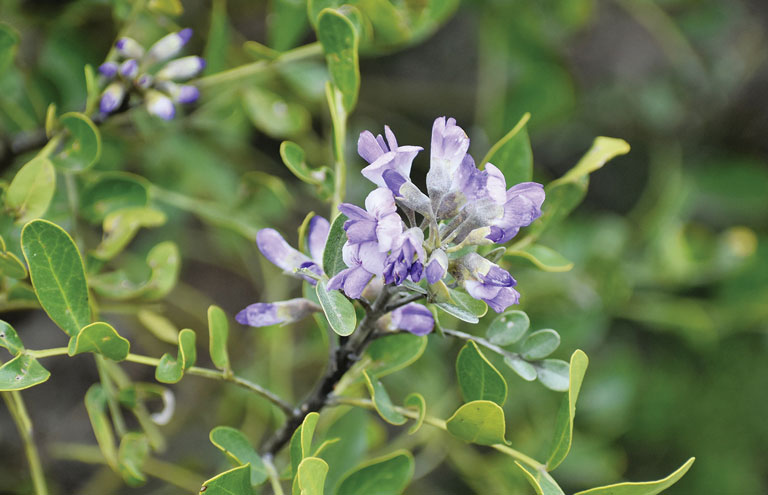
Texas mountain laurel (Sophora secundiflora)
This evergreen species is not that big, as it only grows 10-20 feet. However, it can create effective shade around your HVAC unit. As it grows, it becomes colored with purple fragrant flowers, which can add a pop of color to your yard.
Beautify your garden with native flowers
If you are looking for other native plants to compliment your new trees, try the following:
- Cardinal’s feather (Acalypha radians): This heat-tolerant red and white spurge blooms between April and November and thrives in dry, sunny conditions.
- Antelope horns (Asclepias Asperula): Attract Monarch butterflies with this narrow milkweed plant. Growing only 1-2 feet tall, these white and green plants bloom from March to October. They require sun and medium water use.
- Sundrops (Calylophus berlandieri ssp. pinifolius): For a bright yellow addition to the garden, plant these primrose flowers. Growing up to 30 inches tall, sundrops bloom between March and September, and don’t require a lot of water.
- Dayflower (Commelina erecta): Found in areas like Bexar and Comal County, these blue spiderwort flowers often bloom from May to October and don’t require much water. They thrive in dry climate, but a bit of shade is necessary for them to grow well.
- Leatherflower (Clematis pitcher): These purple buttercup flowers bloom from March to October and have been known to grow in Hays County. They require a medium amount of water and a little shade to thrive.
Find a full list of native plants at the Lady Bird Johnson Wildflower Center’s website.


